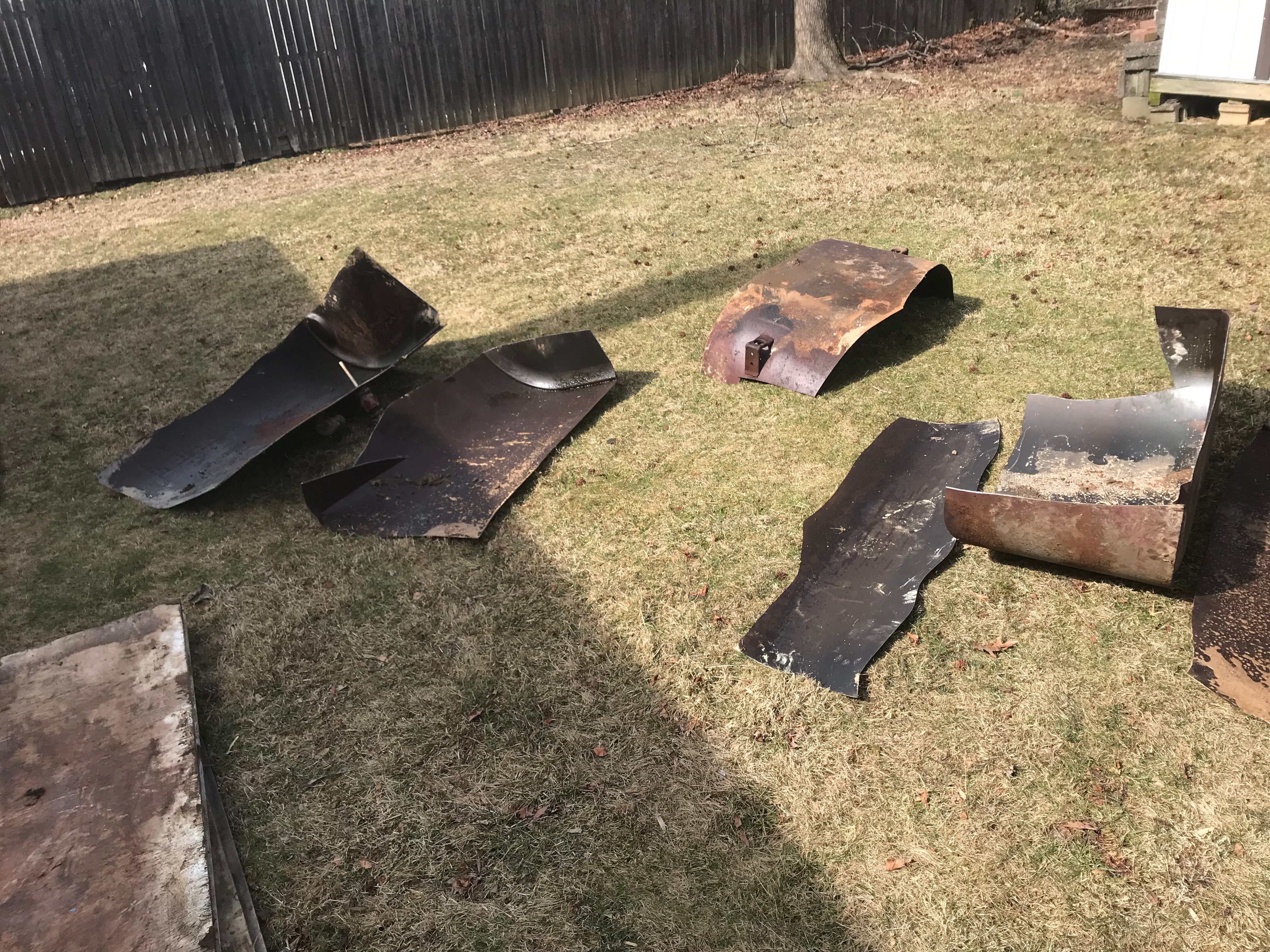Crawlspace Oil Tank Removal
Oil tanks were installed with no thought of ever having to remove the tank from the property. This is contrary to current regulations and home buyer requests to have oil tanks removed and tested.
It is a scientific fact that "Rust Never Sleeps" and a metal tank will degrade and liquid in the tank will escape (leak) and contaminate the ground and require remediation.
Homeowners began converting to fuel oil back in the 1940s, when it was marketed as a cleaner alternative to coal. By 1960, 32 percent of houses in the United States had oil heat.
Whether it be in a crawlspace, basement or under the ground, your oil tank is anywhere between 40 and 80 years old and either is leaking or will eventually leak. If your crawlspace or basement tank leaks, the pungent heating oil odor will emanate throughout your home…a smell that is difficult and costly to remediate.
The name says it all, oil tanks in a crawlspace. Crawl space is a space that is usually only large enough in height to crawl through, hence the name crawlspace. Openings to even access the crawlspace are small as the photo illustrates.
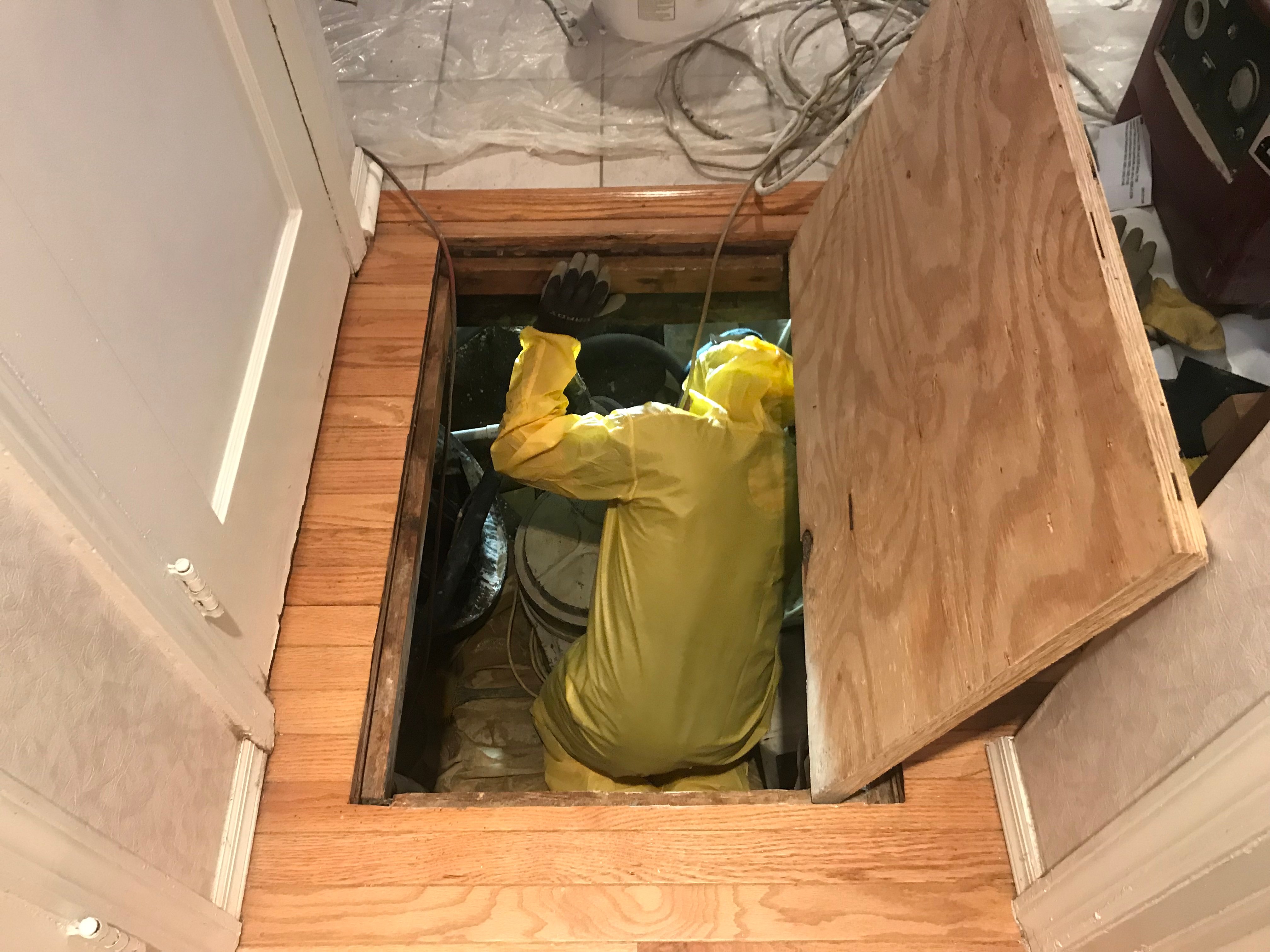
The good news about crawlspace oil tanks is the crawlspace has to have some height to fit a tank.
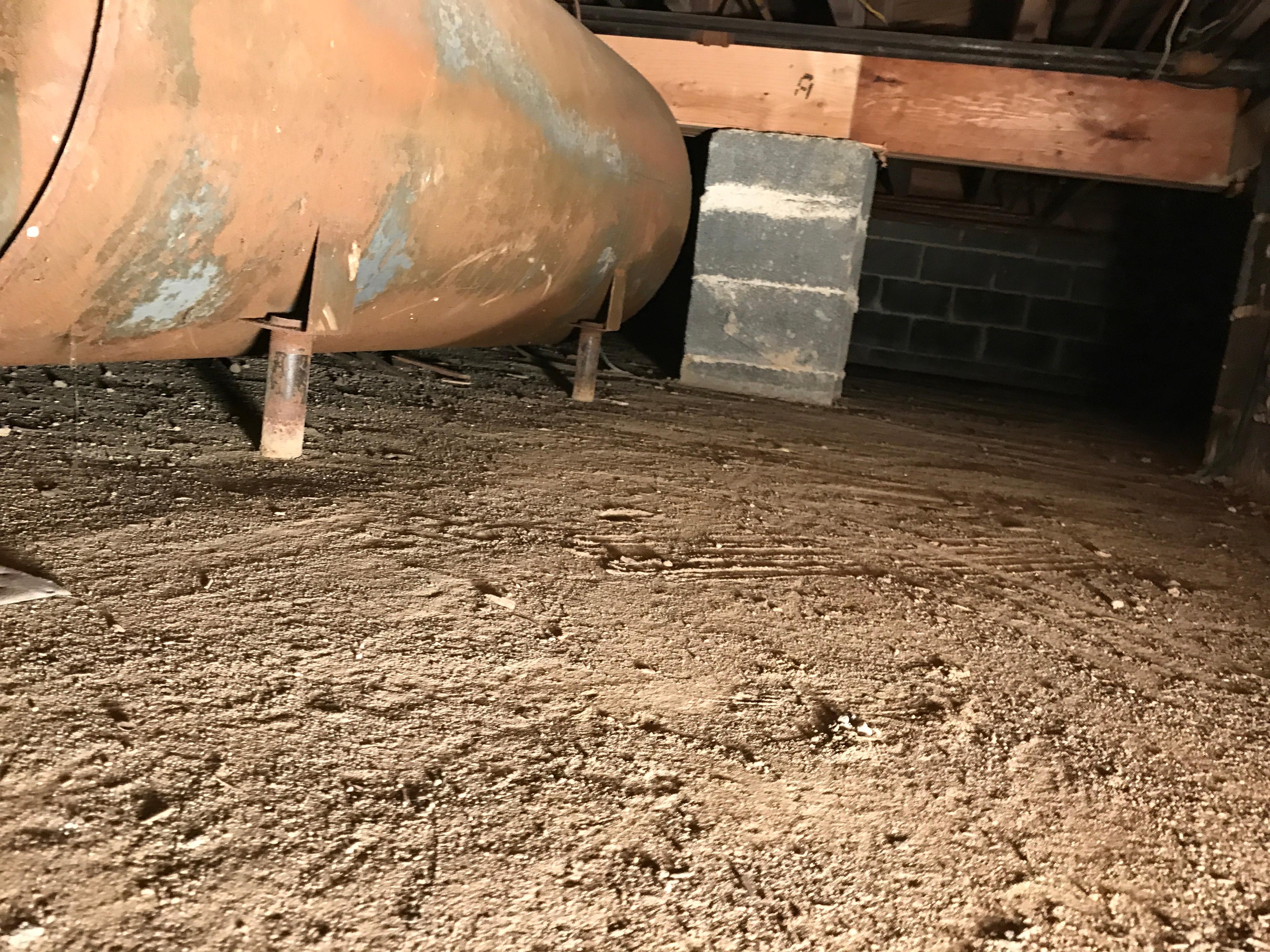
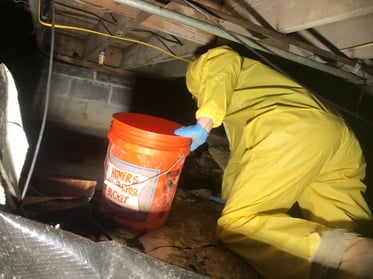
Many crawlspaces are concrete, so inspection of the tank for leaks at time of removal can be visual. Dirt crawlspaces typically require soil sampling.
The photo below is a UST in a crawlspace. A UST by Federal definition is a tank which is buried 10% or more below grade. This tank actually leaked, because crawlspaces are damp and the tank is sitting in soil that captures moisture and rusts the tank. The owner did not smell the leak because the holes were on the bottom of the tank and the soil kept odors underground.
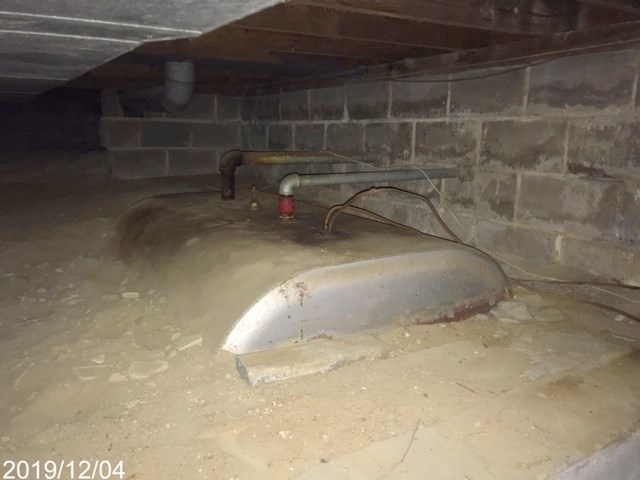
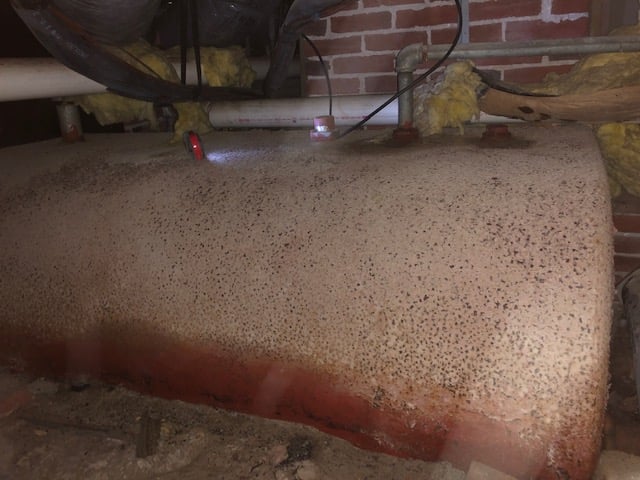
Most all crawlspace tanks require dismantling to be able to remove the tank from the space. If you started putting these pieces together you would have a jigsaw picture of an oil tank.
